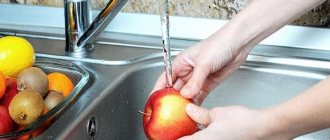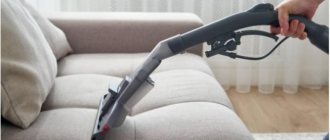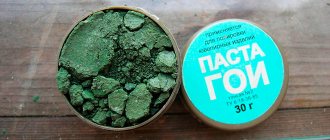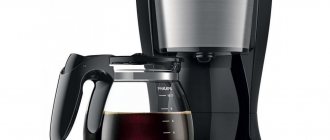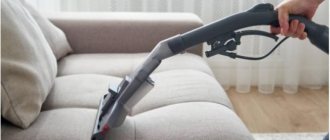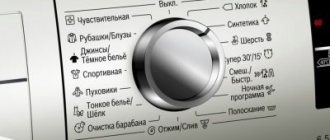The cleanliness of the apartment and bathroom is of great importance. Accordingly, objects with the help of which order is restored cannot be considered insignificant. Cleaning the toilet is not a whim, but an important part of hygiene. Therefore, here are some subtleties about how to choose toilet brushes.
When buying a brush, you should hold it in your hands, checking how comfortably it fits in your hand. If there are models on the counter with handles of different lengths, you should choose the one that is longer, so you don’t have to bend too low over the toilet. Moderate elasticity and strength of the handle characterize a high-quality model. To determine which toilet brush is best, you should take into account one more indicator - the stiffness of the bristles. Stiff bristles efficiently remove dirt from earthenware. The dismountable brush makes it easier to care for – washing, drying, disinfecting.
Appearance is of no small importance. Color, shape, finish should be combined with the design of the bathroom.
Any brush model should be periodically washed and disinfected, and then dried well. How to wash and clean a toilet brush is described below.
Washing and disinfection are usually carried out using chlorine-containing solutions, hydrogen peroxide, and soda. The stand and the brush itself are washed, rinsed, and dried thoroughly. If all conditions are met, no questions will arise about how to keep the toilet brush clean, because steamed chlorine and vinegar do an excellent job of disinfecting even heavily soiled surfaces.
The brush itself should also be regularly disinfected, even in the absence of infectious diseases. There is no need to be tormented by questions, looking for “revolutionary” ways to clean and wash a toilet brush for a toilet bowl. It is enough to use the same solutions with chlorine or buy any chlorine-containing cleaning product.
If you remember the safety rules when working with harmful substances, there will be no difficulties. When working with chlorine solutions or vinegar, precautions should be taken - wear rubber gloves, avoid getting vapors into the respiratory tract and liquid droplets on the mucous membranes.
If you are at a loss about how often to wash this device, you should remember that there are generally accepted rules for using a toilet brush. It needs to be washed at least once a month, and preferably every week. If there are cases of intestinal infection in the family, the device should be washed and disinfected every day.
An important detail of the toilet interior
Surprisingly, this ordinary toilet item can be original. After a fresh renovation of the toilet and bathroom, I want to add modern accessories. The aesthetics of the toilet cleaning device also plays a role.
In such cases, a person is faced with the task of buying a brush that will decorate the bathroom. Some toilet cleaning devices look like independent interior decoration.
- by color (various noble shades: gold, silver, black, white, etc.);
- in shape and decoration (for example, there are brushes inlaid with Swarovski rhinestones, with patterns or handles in the form of flower stems).
Replaceable brush heads in different colors: red, black, white
A spare nozzle for a toilet brush is designed to save money and not have to replace the entire toilet set.
It is a replaceable element in the form of a brush with bristles. The classic thread diameter is 80 mm.
To change the brush head, you just need to remove the old one and insert the brush handle into the thread of the brush.
How to use a brush and how to clean it?
There are several simple rules for using a toilet brush:
- Hold the brush firmly in your hand. Do not grab the handle too low - this can get your hands dirty and wet.
- Dip the brush into the toilet if the water in the drain is clear. For an antibacterial effect, pre-fill with detergent. Make scrubbing movements.
- After cleaning is completed, drain the water from the cistern. At the same time, rinse the dirty brush. This way the brush will get rid of the unpleasant odor.
- After cleaning, gently tap the toilet bowl rim with a brush several times to dry it a little.
Attention! It is recommended to pour an antibacterial agent into the brush stand. The glass into which the water from the brush is drained must be cleaned from time to time.
The bristles of the brush should not touch the floor or walls.
How to wash brushes correctly
Over time, the toilet brush acquires an unpleasant odor and turns yellow. E. coli and bacteria that cause various diseases accumulate in the bristles of the brush. It is recommended to clean your toilet brush once a month or more often.
Attention! Rinse the brush under running water after each cleaning. There are several ways to disinfect a brush:
There are several ways to disinfect a brush:
- Soaking in an antibacterial solution (potassium permanganate, boric acid or hydrogen peroxide). Pour acid into an unnecessary container and leave the brush in it for a while.
Soak the brush for an hour in a special mixture consisting of soda, salt, vinegar, boiling water and any cleaning agent.
Pour the cleaning agent and a quarter cup of vinegar into a container that is discarded after use. Add baking soda (half a glass) and two tablespoons of salt. Then pour in half a glass of boiling water. Leave the brush for an hour. This method is the most effective.
| Inconvenient for children to use | ||
| Floor | Affordable price Does not require installation | Promotes bacteria growth faster than other types |
| Suspension | Increased level of hygiene Easy to clean | Not always compact |
| Multifunctional | Compactness | High price |
You can hold the brush in a solution of bleach or concentrated acid from vinegar
It is important to be extremely careful and use gloves to prevent products from getting into your eyes or skin.
A simple and quick way - pour the detergent into the toilet bowl and leave the brush for half an hour, then drain the water in the tank. If desired, you can also use bleach.
Rules for using the product
How to properly brush your teeth with brushes to get the desired effect, but at the same time, not harm your gums and enamel? During the hygiene process, you need to pay attention to the following points:
- before using a new brush, you need to treat it with an antiseptic solution: you can also boil it for 2-3 minutes if it is made of hard plastic, or treat it with a UV lamp,
- the nozzle should be changed at least once every 7-10 days,
- you need to brush your teeth with a brush without paste or powder,
- bleeding gums in the first 1-3 days after starting to use the product is a normal phenomenon that goes away on its own,
- Do not move up and down when cleaning,
- the device is not used to clean the incisors of both jaws,
- if the product does not fit well into the space between the teeth, you need to change the nozzle: choose a shorter bristles size,
- procedure duration 2 minutes,
- when inserting the rod between the teeth and during the cleaning process, you should not put additional pressure on the brush for a “better” effect: this risks damaging the enamel layer,
- You need to use the device twice a day,
- After the procedure is completed, the product is washed with water, treated with an antiseptic, and dried.
In addition, the quality of hygiene is also affected by the cost of the device - cheap models, as a rule, are made of low-grade materials that quickly become deformed and become unusable.
Folk remedies
There are several known ways to clean cleaning tools from yellowness and remove unpleasant odors. They use tools that can be found in any household:
- Pour 2 tbsp into a glass jar. l. dishwashing detergent, such as Fairy, add 1/4 cup table vinegar, 1/2 cup soda and 2 tbsp. l. salt. All this is diluted with boiling water. There should be enough mixture so that the bristles of the brush are completely immersed in the liquid. Place the brush in a jar and after an hour rinse under running water.
- Citric acid (10 g) is dissolved in 1 liter. water, then add a quarter cup of vinegar. A brush is dipped into the resulting solution and soaked for half an hour.
- Pour dish detergent into a glass for storing the brush, immerse the brush and leave for 15 minutes. To make the bristles white again, you can add a little bleach. This cleaning method does not take much time and can be used for everyday cleaning.
Regardless of the cleaning method, at the end of the procedure it is necessary to rinse the brush under running water.
When cleaning the toilet, you should not ignore the toilet brush. It must be thoroughly washed and disinfected regularly, because this is the only way to prevent the proliferation of bacteria that can cause infectious diseases.
Processing options
But to prevent the toilet brush from becoming a source of infectious diseases, it must be systematically disinfected. This must be done correctly! Otherwise, bacteria will remain in the bristles, which may end up in the respiratory tract.
Table vinegar
So, what is the easiest and most effective way to treat a toilet brush? An affordable, handy remedy that costs a penny is table vinegar. With its help, you can tidy up not only the accessory, but also the toilet itself. Such a remedy:
- kills bacteria well;
- eliminates foul odor;
- whitens the bristles.
This product is very easy to use! Concentrating detergent should be poured into the container. Add 2 tbsp to it. l. table salt and 100 g of baking soda. As soon as all the crystals have time to dissolve, pour in table vinegar. How much of this product will be needed? Only 50 ml. Next, this mixture needs to be poured with boiling water. Now you can send the brush itself into it. The accessory will need to be kept in the resulting mixture for 1 hour, after which it should be rinsed generously in running water, possibly directly over the toilet. The best solution for this is a shower head that can be reached with a hose.
But there is another option for treating a brush using vinegar. First you need to prepare a saturated solution of citric acid. They need to immediately fill the brush. Then table vinegar is added. As a result, foam will begin to form. Don't be afraid of this! This reaction is normal. This means the product is working. After the formation of foam stops, you will need to rinse the toilet accessory with warm running water.
Ready-made products
But it’s not only with improvised compounds that you can properly disinfect a toilet brush. There are high-quality ready-made formulations that work quickly and effectively. These include “Silit” and “Domestos”. “Duckling” also works well. But it is optimal to use the product in black packaging. Others do not do their job very well. The main thing is to use any of the chosen means correctly.
So, how to properly handle a restroom accessory? To do this you will need to use a separate bucket. The selected composition for washing plumbing should be diluted in it. Send an accessory to it. It should soak for at least 2-3 hours. Then rinse the brush thoroughly in running water.
But there is another option for processing a toilet accessory. The first step is to pour the disinfectant into the toilet. Clean it with a brush. Then rinse off the water. Next, the product is poured into the toilet again. The accessory needs to be placed, let it soak for several hours. But during this time you should close the bathroom and not use it. This will avoid not only contact with bacteria, but also harmful fumes that come from the chosen product.
When the brush is completely clean, it is recommended to leave it sandwiched between the lowered seat and the compact itself. For about a quarter of an hour. This will get rid of any remaining water.
Dish detergent
Another affordable and very simple option is to use dish soap. It can also be used to treat a toilet brush. Moreover, you can do this every day. It will need to be poured into the toilet itself or into a special stand for the accessory. Leave the brush in dishwashing liquid overnight. In the morning, you only need to rinse the brush and the second item involved.
Why is this method attractive? Thanks to him:
- the brush is effectively disinfected;
- becomes significantly cleaner visually;
- the toilet bowl (or stand) is cleaned;
- the room is filled with a pleasant smell.
At the same time, everything is very simple. There is no need to perform any additional manipulations.
Other Available Tools
Many housewives do not trust simple remedies too much, and therefore choose powerful drugs. Among these, the leader is “Whiteness”. “Toilet duck”, which contains chlorine, is also often used. But there are also effective home remedies. Among them, supporters of crystal purity highlight manganese and hydrogen peroxide.
Why brushes cannot be used with implants and dentures
Some, even well-known manufacturers of dental brushes, indicate in the instructions that their products can be used with dentures, crowns, and implants. But this is just an advertising ploy to expand the customer base. In fact, implantologists are categorically against it, because Gums after prosthetics partially lose sensitivity. Therefore, it is enough to simply damage them with villi (even seemingly soft ones) and cause an infection - and then treat complications. Therefore, it is also prohibited to use toothpicks. And for patients with dentures and implants, it is better to give preference to an irrigator for washing the interdental spaces and subprosthetic space, or choose dental floss labeled “super floss” - the rest will not be suitable, since they are quite hard.
Tips for using, caring for and storing a toilet brush
Recommendations for storing a toilet brush that will prevent the appearance of an unpleasant odor and the spread of bacteria:
- the brush can only be left in the stand; under no circumstances should it be thrown onto the floor;
- For a hanging accessory, it is imperative to provide a container to collect residual liquid;
- Toilet cleaning devices should be placed as close to the toilet as possible so that when moving it to a storage location, residual liquid does not fall on the floor.
From time to time you need to buy a new accessory to care for your toilet. There is no specific period, it all depends on the condition of the brush. If the bristles become sparse and the brush does not clean the plumbing fixtures well, it should be replaced.
- 5
- 4
- 3
- 2
- 1
How does the device work?
The principle of operation is based on the ability of the villi to penetrate into the most inaccessible places in the dentition, ensuring the cleaning of each individual tooth from all sides. Thin, but hard and dense bristles can remove even pigmented plaque (but not stone, of course).
The wire on which the villi are located is highly flexible, which makes it possible to clean remote areas of the oral cavity. A mild mechanical effect on the enamel acts as an abrasive (especially when smoking or drinking coffee), creating a whitening effect.
Traditional cleaning methods
As a rule, before cleaning the toilet brush, select an unnecessary container into which it will be convenient to pour the working solution. Baking soda, boiling water, salt, and vinegar may come in handy.
Features of using vinegar
Table vinegar copes well with old stains, eliminates odors, and whitens
Pour a little of any available detergent into the container; it is only important that it is concentrated. 2 tbsp is injected into it
l. salt and 4 tbsp. l. soda, mix thoroughly until the dry ingredients are completely dissolved. Pour in 3 tbsp. l. vinegar and boiling water, the liquid should completely cover the brush of the brush installed in the container. The instrument is left in the solution for an hour and a half, then rinsed under running water.
Vinegar - a home remedy for cleaning brushes
Simple bleach can also be effective here, but when using it, you need to ensure that vapors and drops of chemicals do not get on the skin and mucous membranes. Since the product has a pungent, unpleasant odor, when soaking the instrument in the holder, it is advisable to take it outside or to the balcony.
For weekly cleaning of toilet fixtures and brushes, you can pour the cleaning product directly into the toilet bowl, place a brush in it for half an hour and rinse everything together when flushing.
Preventive use of detergents
If there is a need for enhanced measures to maintain cleanliness, it is worth pouring homemade or store-bought cleaning product into the holder overnight and leaving the brush in it, rinsing it in the morning. In this case, you don’t have to worry about the spread of unpleasant odors and the proliferation of pathogenic microorganisms.
It is also recommended to periodically disinfect the brush using bleach, household chemicals, diluted potassium permanganate, and hydrogen peroxide. The selected product is poured into a container, the instrument is placed in it and left for an hour.
When using household chemicals, it is important to follow the manufacturer’s instructions on the label; when using aggressive mixtures, have personal protective equipment on hand in the form of a mask and gloves
Where can I purchase the product and what is its cost?
Devices for cleaning teeth are sold in pharmacy chains, online stores, dental clinics, and relevant departments of supermarkets. Usually these are sets that can contain both models with non-removable holders, as well as removable and several attachments. The set may also contain brushes of different sizes and shapes, and the price of the set depends both on the characteristics of the products included in it and on the manufacturer’s brand. The cost of a set of brushes can range from 200 to 1,500 rubles and more.
“I buy Lakalut in our hypermarket; five pieces in a package cost only 300 rubles. Enough for more than a month. Cleans great..."
Angela L. (from a message from the stomatologclub.ru forum)
Domestos or Silit
To clean the toilet brush, you can use the same household chemicals as for the toilet. Domestos or Silit will help in this case, and Duckling also copes well with dirt, only in black packaging.
How to properly clean a toilet brush:
- Dilute plumbing cleaner in a bucket and leave the item to soak. After 2-3 hours, rinse under running water.
- Pour Domestos into the toilet and clean it with a brush. Then rinse off the water. After this, pour more product and leave the accessory to soak.
While soaking, you must leave the bathroom or toilet to avoid breathing harmful fumes.
You can put on gloves and rub the brush against another brush; of course, you will have to throw it away later, which is not very economical, but effective.
When the brush is sparkling clean, leave it pressed between the toilet and the lowered seat for 15 minutes so that the water drains from it.
How to use the product – with and without braces
How to use a dental brush correctly? The algorithm of actions is as follows:
- select and install the desired attachment on the holder,
- place the brush near the dentition at an angle of 90˚ relative to the front surface of the teeth,
- carefully insert the product into the space between the teeth so that its tip appears on the opposite surface,
- clean the interdental space by rotating the brush or moving it back and forth,
- do the same with the next gap,
- After cleaning, rinse your mouth with water or mouthwash.
Recommendations for storage and use
If the housewife aims to keep the toilet in good condition, then it is necessary to regularly clean the brush or buy a new one. If you store and use this device incorrectly, you will soon have to wash not only it, but the entire restroom.
The brush must be used together with a stand. Therefore, it is necessary to take care of this. It is best to place the accessory close to the toilet and away from the walls. By following these simple recommendations, you can get rid of many problems that this household item can bring.
There are 4 basic rules that should be followed when using such a device. Their list is as follows:
- It is not recommended to store the accessory in a closed space. This speeds up the process of bacteria spreading.
- The brush should not touch the walls or floor.
- After each use, rinse the device under running water.
- It is best to clean or replace the device at least once a month.
In what cases should this product be used?
It is recommended to use a dental brush in the following situations:
- requires more thorough oral hygiene than a toothbrush and even dental floss can provide,
- under normal conditions, the back surface of the dentition is poorly cleaned,
- pieces of food get stuck between the teeth, which cannot be removed using conventional methods (rinsing or brushing),
- a bracket system is installed on the dentition, the elements of which require better care,
- Plaque often accumulates on the enamel, and ordinary cleaning cannot cope with it.
If you find yourself with such problems, anyone can buy a brush for brushing their teeth and improve the quality of their oral hygiene.
“In addition to preventive and general recommendations for use, the products also have medical indications. For example, they must be used if braces are installed, if there are pathological changes in periodontal tissues. They are also indicated in the presence of crowding of dentition units or, on the contrary, in case of significant interdental spaces. In addition, the dentist may advise you to use a brush if you smoke, drink a lot of coffee or black tea, or often consume products with dyes - the device helps not only remove plaque from the enamel, but also prevent its staining,” says the expert, dental therapist Uspangalieva Nina Borisovna.
Why care for your brush regularly?
To ensure the hygienic cleanliness of the toilet, it is not enough to flush the water thoroughly; you must clean its surface with a special brush. Proper use allows you to remove not only biological contaminants, but also rust.
A toilet brush can contain several thousand varieties of bacteria and microbes. Not only will it lose its pleasant appearance, the brush will acquire a foreign odor and pose a potential threat to the health of all household members. This is why weekly cleaning of not only the toilet itself, but also the brush is so important.
Manufacturing materials
Toilet brushes can be made from the following materials:
- plastic,
- metal,
- silicone,
- ceramics,
- acrylic,
- tempered glass.
Budget models include brushes made of plastic, acrylic, and silicone. Thanks to their low price and wide selection of colors, these models always find their buyer. Many housewives choose a modern silicone toilet brush.
More expensive accessories made of ceramics, glass, and bronze are no longer just an attribute of cleaning, but a full-fledged interior detail.
Basic methods
The following products are mainly used to clean brushes:
- Domestos;
- Silit;
- Faberlic for toilets;
Table vinegar is no less effective in removing contaminants, which simultaneously suppresses the activity of pathogenic microorganisms: staphylococci, streptococci and others.
Chemicals
Regardless of the type of household chemical you choose, you can clean your toilet brush using one of the following methods:
- Pour the chemical into a container and place the toilet bowl cleaner there for several hours.
- Pour the liquid into the toilet and thoroughly clean the device using a brush.
- Pour the product into the glass in which the brush is stored and let it sit for at least 15 minutes. This cleaning option is considered more preferable.
Chemicals for household appliances are highly effective in combating dirt and pathogenic microorganisms. However, such products in concentrated form can be harmful to health. Therefore, when using household chemicals, it is recommended to use protective equipment: gloves, face mask, and so on.
Ways to quickly clean a comb and care rules at home
Domestos
Domestos is considered the most common household chemical product. This product is able to clean surfaces with various types of contaminants and destroy bacteria. The main disadvantage of Domestos is that the liquid emits a pungent and unpleasant odor. Therefore, after applying the product, it is recommended to leave the toilet.
Silit
Silit, like Domestos, helps clean surfaces from various types of contaminants. Both products are comparable in effectiveness. Silite has a gel structure. This product, due to the hydrochloric acid included in the composition, is able to remove limescale and deposits.
Toilet bowl cleaner from Faberlic
A Fabelric brand product can clean a toilet brush white. The product is based on formic and oxalic acids, which, unlike the above liquids, do not emit a sharp, unpleasant odor.
Sarma
The Sarma gel-based cleaner is relatively cheap, but is not inferior in effectiveness to the above liquids.
Vinegar
To remove dirt from a brush, use a mixture of two tablespoons of salt and four tablespoons of soda. Both components are mixed until smooth. Then three tablespoons of vinegar and boiling water are added to this composition. The resulting liquid is poured into a glass with a brush and kept for 1-1.5 hours.
Detergent
You can also wash the brush using a mixture that includes:
- 2 tablespoons of detergent;
- a quarter glass of vinegar;
- half a glass of soda;
- 2 tablespoons of soda.
The resulting mixture is also diluted with water and then poured into a glass with a device for cleaning toilet bowls.
Lemon acid
10 grams of citric acid should be mixed with a liter of water and a quarter cup of vinegar. After this, you need to keep the brush in the composition for an hour.
10 best remedies for removing and wiping off black stripes on shoes
Removing thick plaque with strong acids
If no folk remedies or cleaning products help, you can use strong acids. These are extreme measures that should be used rarely and the exposure time strictly observed, since such chemicals can corrode the enamel and harm pipes and plastic parts.
Oxalic acid
Moderately toxic organic acid. A popular cleaning product for plumbing fixtures in the times of our grandmothers. Provides perfect whiteness and effectively removes stone. Nowadays it can be purchased at construction stores. Before use, carefully read the instructions and wear thick rubber gloves.
Mode of application:
- Pour powdered acid onto a damp cloth.
- Apply to contaminated areas. If you need to clean the drain, dissolve it in water.
- Wait 1 hour, during which time the plaque will dissolve.
- Rinse thoroughly with water using a brush.
Orthophosphoric acid
It is an inorganic acid of medium strength. Using it, you can not only clean the toilet from stone, but also remove rust from the internal parts of the tank. The main advantage of this acid is that it does not damage rubber and plastic elements. Mode of application:
- Pour 100-150 ml of acid into the tank and into the drain hole
- Wait 15 minutes
- Rinse with plenty of water and clean with a brush.
Hydrochloric acid
This is a very strong toxic agent
Will remove stone instantly but should be used with extreme caution. Before use, wear safety glasses, a respirator and thick rubber gloves.
The vapors of this acid are also dangerous!
Mode of application:
- Apply liquid to the walls and pour half a glass into the drain hole.
- Exposure time – 10 minutes.
- Rinse with plenty of water
Electrolyte
Battery electrolyte is produced on the basis of sulfuric acid; it can be found in any store for car enthusiasts. This strong and very dangerous product perfectly dissolves limescale and urinary stones. It can be used only in rare cases. The method of application is similar to the method with hydrochloric acid: apply, leave for 10-15 minutes and rinse with water. When using, follow all safety precautions, avoid splashing the product, as you can get chemical burns.
Handle and nozzle (head) of a toilet brush
Ruff (kvach) is a brush made of artificial fibers or plates on a half-meter handle. The set usually includes a glass stand, and sometimes a mount for installation on the wall. The design of the brush head and its handle can vary greatly depending on the specific model. Here are the designs of brushes that can be found on sale:
Straight handle and round head
The photo shows the most common brushes with plastic handles and heads made of artificial bristles. The option with a slightly curved handle is more practical, but these are still rather “clumsy” tools, with the help of which it is impossible to efficiently clean hard-to-reach places.
Straight handle and oblong head with double-sided bristles
A more sophisticated brush made from the same materials. Equipped with double-sided bristles, which makes it easy to clean even the edge of the toilet bowl. The head is slightly curved for ease of use. But it has the same drawback as the first option: bristles that are difficult to clean from dirt. This means that the brush will have to be changed often or better washed.
Suitable for cleaning hard-to-reach places. The cleaning surface does not become clogged.
D-shaped brush head
The D-shaped head of the brush reaches all the hidden corners. The brush head is flexible because it is made of silicone. The design of the head and the material of the “pimples” make it easy to rinse the brush under running water. Curved metal handle with plastic holder and oblong double-sided cleaning surface.
Silicone spiral head and straight but flexible handle
Another model of a non-clogging head. The handle is straight, but made of elastic material, so it bends easily when you need to reach the rim and other hard-to-reach places on the toilet. Easy to wash after use.
Original head shape and straight handle. Convenient model for both cleaning and storage.
This clever design allows you to effectively combat pollution. The brush is flexible, so it will reach everywhere.
Not the most convenient option for cleaning. But it looks stylish. Compact.
Not very convenient to use. No stand or holder.
Another model familiar from Soviet times.
Disposable brush
Brush with a disposable fabric nozzle.
Hygienic option. Be sure to throw away the replacement part after use.
Cone-shaped silicone brush with metal handle
The tool has a very flexible head. The photo shows how to use the device. Does not clog, easy to rinse. Suitable not only for washing, but also for cleaning the toilet.
Instructions for use
How to use an angle grinder correctly
You should use a bidet after every visit to the toilet. There are no special requirements for use, the main thing is that it is convenient. Most users prefer to sit facing the device, however, this depends on the type of model.
Modern models have several operating modes, including those in accordance with the user’s gender. This allows women and men to wash themselves quickly and comfortably. Some people use toilet paper before washing, while others use a bidet straight away. How to do it right is up to the user to decide. The only thing that doctors recommend is to use soap.
Before using the device, you should check the temperature and water pressure. This will avoid burns and splashing from the water jet. Towels should be placed near the device. From a hygienic safety point of view, these should be disposable towels or napkins. After use, the wipes should not be thrown away in the bidet. Otherwise, clogging of the drain hole cannot be avoided. It is worth placing a special trash can next to the bidet. Many models are equipped with a drying and warm air function, which allows you to avoid using towels.
A bidet is especially necessary for caring for the female genital organs. Regular washing is the best prevention of genital diseases and allows you to maintain their cleanliness during menstruation and after sexual intercourse. As practice shows, it is more convenient for a woman to sit facing the bidet. Men, on the contrary, usually sit with their backs to the bidet. After each use, it is advisable to rinse the bowl using a disinfectant composition.
Types of toilet brushes
Yes, and such a simple attribute has variations. Moreover, brushes differ in material, storage method, and, if you like, color.
In order to choose what will be the best option, in your opinion, you need to study what the market offers for these accessories.
According to the material of execution it can be:
- plastic;
- stainless steel;
- ceramic;
- chrome plated;
- silicone.
Depending on the quality and reliability of the selected material, the price of this item also varies. And if an ordinary plastic brush costs very little money, then, for example, a floor-mounted metal toilet brush will be significantly higher in price.
What to choose is up to the owner. Everyone's needs and capabilities are different. But it is clear that a quality item should be more expensive.
In addition to this distinctive feature, a toilet brush may differ from another in its storage method.
Floor brush
Floor. We can say that this is a classic type of toilet accessory. It can also be called glass.
Because the toilet brush is stored in a special bowl, which also serves as a stand. It is installed directly on the floor in any convenient place.
But while this traditional toilet floor brush is very popular, it is still considered the least hygienic option.
In the stand it is stored in a dirty, humid environment without ventilation, which is a favorable factor for the proliferation of pathogenic bacteria and harmful microorganisms.
Wall. This toilet brush differs little from the floor model. Only the stand in this configuration is not located on the floor, but is attached to the wall. The disadvantages of this brush are the same as in the previous storage method.
Hanging brush
Suspension. This storage method is considered the most acceptable.
In this case, the brush is hung on a special hook, and the water flowing from it falls into a receiving glass, which is installed directly under the brush.
This ensures ventilation of the hygiene item.
And if the brush is washed well, then with this storage method it will accumulate the least amount of bacteria.
Multifunctional brush
Multifunctional brush model.
The modern market offers original versions of toilet brushes that combine other functions.
Also interesting: Shower for toilet: versatility and convenience two in one
For example, a combination of a brush and a toilet paper holder.
It is a high stand on which two stands are installed.
If there is not enough space in the toilet room, then thanks to this design the problem of placing the necessary accessories is solved.
Sometimes the package may also include holders for containers with cleaning products or for newspapers.
Leading manufacturers
The modern choice of toilet brushes is so diverse that leading manufacturers of this product segment try to combine all the buyer’s wishes in one product, bringing the device into compliance with all stringent requirements for hygiene and durability.
Brabantia
Product made of plastic and metal. A chrome-plated holder will hide the brush. The base of the stand is equipped with a plastic gasket, which prevents scratches on the coating. Comfortable removal and reinstallation: one side is completely closed, therefore hiding all the details of the brush, and the second is open for convenient placement of the brush in the stand. It has a hard pile, is reliable and lightweight.
Toilet brush disinfectants
Brushes that allow you to clean the toilet can be divided into several types.
Simply cleaning the brush using a soap solution will not be enough to remove all bacteria and germs from it.
Therefore, it is important to periodically disinfect this accessory using the following substances:
Whiteness, “Toilet duckling”, “Cilit Bang”, “Domestos” and other cleaning substances containing chlorine. It is imperative to use rubber gloves when working with such products to prevent skin burns. Vinegar essence is an excellent disinfectant.
It is important to keep it out of the reach of children, and when using it, wear protective gloves and try not to inhale its pungent odor. Boric acid, hydrogen peroxide and manganese work well against bacteria. The following composition disinfects a toilet brush well: baking soda, vinegar and boiling water. You need to soak the accessory in this product for 1 hour.
The toilet brush needs to be washed regularly, this is the only way to keep it clean and protect it from the spread of germs. However, improper storage of it can lead to the fact that you will have to wash the entire toilet room, including its walls and floor.
Review of the most popular products
Which brushes are best for teeth? Below is a brief overview of the most popular brands, created based on reviews from online users.
LACALUT
LACALUT products are distinguished by the material they are made of - this is a special mass used for the production of surgical instruments. Great for cleaning teeth with braces. The protective cap can be used to extend the holder. Cost – 230-420 rubles.
CURAPROX
The manufacturer has tried to produce models for any purpose: simple teeth cleaning, with braces. The line includes products of different configurations and sizes. Can be used both for self-care of the oral cavity and for professional hygiene. Cost – 800-2000 rubles.
Plackers Interdental Mix
This set is perfect for a beginner – it contains products with different sized attachments. The rod is flexible and the holder is quite long. The kit includes a protective cap. Cost – 240-300 rubles.
PresiDENT
PresiDENT models are distinguished by their curved shape, comfortable holder, and compact size. They are mainly intended for people whose dentition is very dense and the spaces between the teeth are narrow. Cost – 240-480 rubles.
Oral-B
Products of this brand are also presented in a wide variety - brushes in the form of cones, cylindrical shapes, equipped with durable and convenient removable holders are available for sale. A plus is the presence of a hygienic storage container. Cost – 320-550 rubles.
Colgate
The company produces products for all occasions, having a variety of shapes and sizes of bristles and holder. High hygiene efficiency with Colgate brushes is achieved thanks to the triangular cross-section of the bristles. Cost – 350-650 rubles.
Purchasing and using a dental brush will significantly improve the quality of hygiene and improve the condition of the oral cavity. However, it is worth remembering that this product does not replace a regular toothbrush and toothpaste. Moreover, only comprehensive use of dental hygiene products will help maintain their health for many years.
Vinegar
Regular table vinegar, which can be found in every home, will help you easily wash the toilet and cleaning items in the restroom.
This method will make the brush white and remove the unpleasant odor.
To make your brush smell nice and clean, use this homemade method:
- Pour concentrated detergent into a container, add 100 g of soda and 2 tbsp. l. salt. After the small particles dissolve, add 50 ml of vinegar and pour boiling water over everything. The accessory must remain in the solution for 1 hour. Then wash it under running water over the toilet using a shower head.
- You can also use this cleaning agent: fill the brush with a solution of citric acid, and then add vinegar. Foam will begin to form, which means the product has reacted and after it has finished, you can wash the brush with warm water, removing any remaining stuck dirt.
Vinegar is the most effective remedy. After using it, your toilet brush will be as good as new.
Vinegar can also be poured into the tank to remove deposits due to bad water. The main thing is to know the correct concentration. Usually the tank has a very strong limescale deposit, so you will need to pour 1 cup of vinegar into it.
After an hour, the plaque is pulled out and the tank is rinsed.
Don't throw it away! Effective ways to clean a toilet brush
How to clean a toilet brush? For most housewives, this question does not arise - they simply throw away the old one and buy a new one. What if there is an alternative that doesn't require much effort?
Many people believe that a dirty toilet brush cannot be cleaned. And they are wrong. We offer several simple ways to help restore your cleaning tools to their original appearance. Believe me, the result will surprise you!
Clean or throw away?
It all depends on the degree of contamination and the quality of the toilet brush. If this is a cheap option, it’s easier to actually buy a new brush. But expensive brushes with a handle made of wood or stainless steel can be revived.
Soak the brush
The first and simplest tip is soaking. Apply the cleaner to the surface of the toilet and then spread it out using a brush. Leave the cleaning accessory in the water and detergent in the toilet for half an hour. Then rinse the toilet with the brush.
Vinegar works wonders
Over time, even soaking does not help in cleaning the brush. A universal home remedy – vinegar – will help you deal with unpleasant yellow or brown stains. Just soak the brush in vinegar for a few hours. After this procedure, the brush will look like new.
Important! Do not add chemical cleaners to vinegar. The interaction of these substances can cause the release of toxic fumes that are unsafe for human health
If you decide to clean your brush with vinegar, do not mix it with other substances.
Cleansing brown deposits
Over time, the bristles of a toilet brush turn brown or orange. Unfortunately, this cannot be avoided. But, fortunately, everything can be fixed. All you need are denture cleaning tablets. Simply dissolve the tablet in a container of water and leave the brush in it for several hours.
Important! Hot water will enhance the cleansing effect. After the procedure, rinse the brush with running water
The result will surprise you.
What to look for when choosing
Manufacturers produce brushes for brushing teeth in different versions, so the question arises - how to choose the right one and what to pay attention to. When purchasing, it is extremely important to consider the following product characteristics:
- length of the device: a shorter one, marked S, is suitable for children, and a brush marked XL is preferable for adults; In addition, there are intermediate options,
- lint length: this parameter determines how good the cleaning will be; if there are large gaps between the teeth, you should choose a product with long bristles (at least three millimeters), with densely spaced units of the dentition you need bristles about 1-3 mm long,
- stiffness of the bristles: selected depending on the sensitivity of the gums and enamel layer - if it is high, bleeding gums are observed, the choice should be made in favor of soft bristles; in other cases, it is enough to purchase a product with medium-hard bristles,
- material: the main rod to which the bristles are attached can be metal or plastic; If the dentition is in perfect order, dentists recommend purchasing products with a metal rod; if you have high sensitivity of the enamel layer and dental problems, it is better to opt for plastic models.
It is important to know! In general, when choosing a product, you should focus on the individual characteristics of the anatomy of the jaws, the presence or absence of bridges, implants, braces and other nuances. Before purchasing, it is advisable to talk to your dentist to get professional recommendations. Remember that brushes are strictly prohibited when any prosthetic structures (crowns, bridges, etc.) and dental implants are installed in the mouth!
